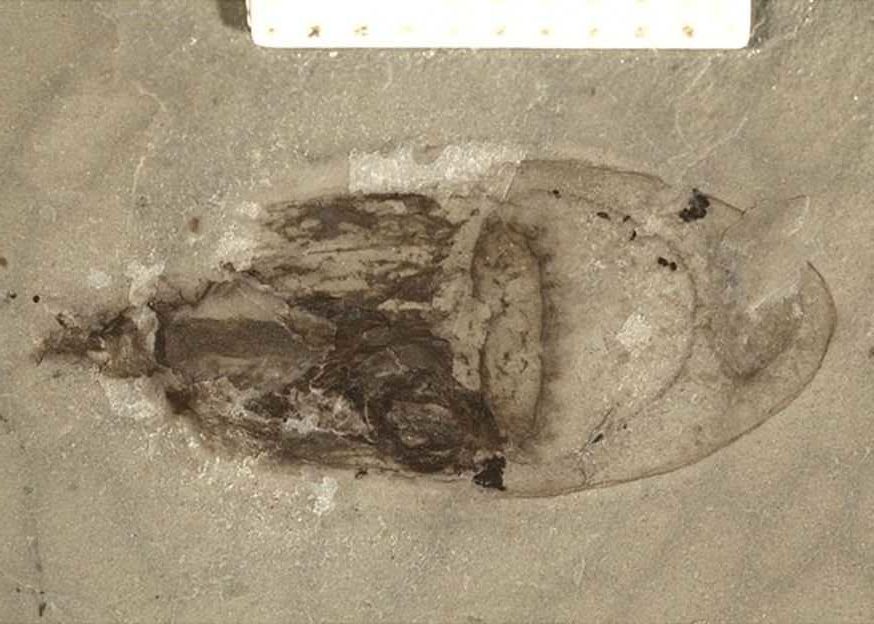 XI’AN, Shaanxi — Researchers in China have announced the discovery of a “treasure trove” of fossilized sea creatures, with some being soft-bodied organisms — a rare occurrence as tissues normally decompose and are not preserved unless there has been a rapid aquatic event. While some speculate that the marine life had been buried by a storm during the evolutionary “Cambrian Period,” Christians believe that the find points to the Great Flood as outlined in the Bible.
XI’AN, Shaanxi — Researchers in China have announced the discovery of a “treasure trove” of fossilized sea creatures, with some being soft-bodied organisms — a rare occurrence as tissues normally decompose and are not preserved unless there has been a rapid aquatic event. While some speculate that the marine life had been buried by a storm during the evolutionary “Cambrian Period,” Christians believe that the find points to the Great Flood as outlined in the Bible.
According to reports, the Burgess Shale-type fossils, known as the Qingjiang biota, provide a glimpse into ancient underwater communities, from jellyfish to sea anemones and comb jellies, to various arthropods and mud dragons.
The discovery has piqued the interest of paleontologists for a number of reasons, including that the find yielded a bountiful and diverse ecosystem, and that approximately half of the fossilized creatures look exactly as they do now and another half are new to scientists.
“[This is an] excellent preservation of so many Cambrian creatures,” Xingliang Zhang, study author and professor at Northwest University in Xi’an, told CNN. “Some are weird, some exactly look like what we have today.”
Fu Dongjing, an associate professor at the university, similarly told China.org that researchers have “spent a lot of time reading literature” in light of what they have considered “new species.”
The soft-bodied fossils are also significant in that their eyes, gills, and organs are so well-preserved. A number of larval or juvenile creatures were also embedded in the rock.
“One of the most incredible things about this finding is the pristine condition of many of these specimens — fossils that haven’t been substantially affected by impacts of time, and in them you can clearly see soft tissues like eyes, tentacles and gills,” Robert Gaines, professor of geology at Pomona College, said in a report released by the California-based school.
“[T]he majority of creatures are soft-bodied organisms like jellyfish and worms that normally stand no chance of becoming fossilized,” he also explained to the BBC.
Zhang told the outlet that the creatures must have been “rapidly buried in sediment” by a storm to have been preserved so pristinely.
However, while researchers such as Zhang, Dongjing and Gaines date the discovery to the Cambrian Period of more than 500 million years ago, also known as the evolutionary “Cambrian Explosion” that “increased the variety of animal species and created the major types of animals that exist today,” Christian scientists believe that the find again points to the Great Flood that swept the entire earth, as outlined in the Scriptures.

“This storm idea is popular, but doesn’t fit all the facts,” Brian Thomas, a research associate with the Institute for Creation Research who hold a doctorate in paleo-biochemistry from the University of Liverpool, told Christian News Network. “If storms made fossils, then we could see it happen today. Much more was needed.”
“Zhang and his coauthors wrote in their technical report in ‘Science’ that sediment-gravity flows trapped these creatures. They also noted protection from bioturbation — where creatures churn through mud and obliterate bodies in their hunt for buried nutrients,” he explained. “Rapid burial of this many organisms at once happens nowhere today, and bioturbation happens all over. So, something unique happened back then.”
Thomas said that the “something unique” was the flood of Genesis.
“The biblical Flood gives us a cause for widespread seafloor turmoil like gravity flows,” he outlined. “But we also need the sea floor to dry out before bioturbation can happen. Well, the Flood only lasted a year. Flood muds soon dewatered and quickly hardened. The Bible says that the waters covered the land and then washed off the surface of the earth. We should therefore expect to see soft-bodied creatures locked in hardened mud on dry land.”
Gabriela Haynes, a researcher with Answers in Genesis who holds a doctorate in geology and paleontology from the Federal University of Ceará State in Brazil, agreed.
“Although the articles talks about Lagerstätte (a fossiliferous deposit that shows exceptional preservation), soft tissue is found in other areas that are not considered Lagerstätte. Finding soft tissue and very well-preserved fossil is related to the event that caused the death of those creatures, the global Flood,” she told Christian News Network.

“As creationists we understand that the Genesis Flood started with the opening of the ‘fountains of the great deep’ (Genesis 7:11),” she explained. “So, the marine invertebrates found in the Cambrian rocks represent the first layer of the Flood, that is a record of the organisms that likely lived and died in the seas. It does not represent an evolutionary event of diversification, but the result of the biblical catastrophe during Noah’s time.”
Thomas further advised why the timing of the fossilization cannot line up with the Cambrian Period — including the fact that radiocarbon does not last for more than 100,000 years.
“Our secular colleagues need millions of years to imagine evolution, so they have assigned 500-plus million years to Cambrian layers like these at Qingjiang. Biblically, the Flood hit about 4,500 years ago, not 500 million,” he noted. “We go with the Bible’s age for three reasons. First, the Flood best explains widespread, rapid burial and protection of seafloor creatures as well as having their remains atop continents rather than at the bottom of the sea. Flood geologists see Cambrian deposits as some of the first of many layers deposited during that Flood year.”
“Second, secular researchers have described original, soft, unaltered proteins in Cambrian sea sponges from Canada. Proteins can last thousands of years, but not a million,” Thomas outlined. “Finally, secular scientists have reported radiocarbon in Cambrian fossils. Radiocarbon lasts no longer than 100,000 years, yet there it is.”
Both Thomas and Haynes additionally pointed out that many of the fossils “exactly look like what we have today,” as Zhang remarked.
“[Jellyfish] look just like jellyfish. No evolution happened,” Thomas said. “These and other creatures, like sea jellies and tiny mud dragons, appear fully formed out of nowhere — just as if God created them.”
“In the Creation worldview, it is a not surprise that some creatures look very similar to what we see now. They were fossilized during the Genesis Flood that happened around 4 thousand years ago and not millions of years,” Haynes stated. “But this information is a challenge for the evolutionary worldview because more than 500 hundred millions of years did not bring any change in those organisms.”
Become a Christian News Network Supporter...


